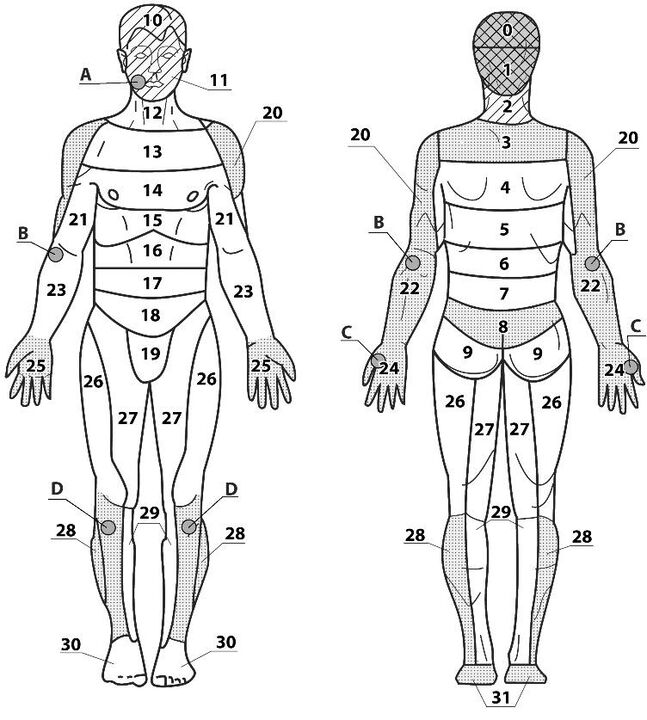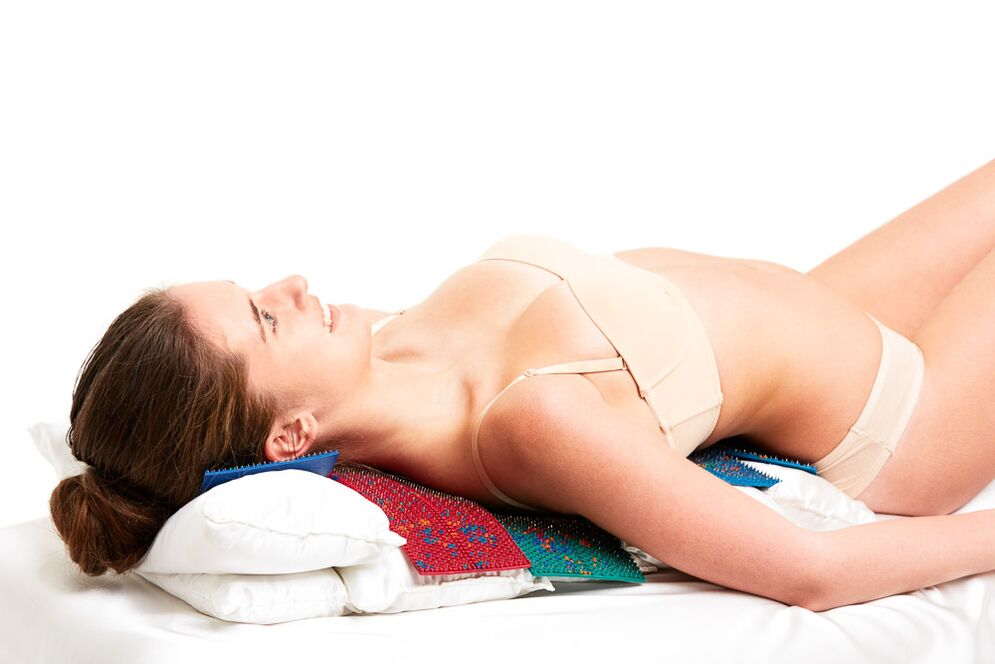Cervical osteochondrosis is a progressive dystrophic-degenerative lesion of the intervertebral discs in the area of 1-7 vertebrae belonging to the cervical spine.
Osteochondrosis of the cervix results in deformation, exhaustion, and then damage to the vertebral bodies. It disrupts normal blood supply and nerve conduction in the neck and areas that are innervated by the nerve roots of the cervical spine.
Cervical osteochondrosis can be isolated or combined with other parts of osteochondrosis - chest, lumbar and sacral.
ᲛReasons
Isolate factors prone to the development of osteochondrosis. ენიYour include:
- A sedentary and lifeless lifestyle;
- Seated type works with static load on the neck;
- Overweight, insufficient physical development;
- Connective tissue dysplastic processes;
- Circulatory disorders of the neck;
- Neck injuries;
- Scoliosis, poor posture, uncomfortable pillows and mattresses;
- Hereditary predisposition, metabolic defects.
Symptoms of cervical osteochondrosis. Complications
The cervical spine is most vulnerable to the development of osteochondrosis. The vertebrae in it are the smallest compared to other parts of the spine, the muscular frame is not very pronounced, its weight and vertical posture affect the vertebrae. The vertebrae in the cervical spine fit snugly together. Even a minimal change in them can cause the nerves and blood vessels to contract and even move.
The most characteristic symptom that patients complain of is pain in the cervix. Depending on the affected area, the pain may be localized: in the clavicle and shoulder area; Along the entire length of the cervical spine; On the anterior surface of the breast.
The first signs of cervical osteochondrosis may be insignificant: a feeling of heaviness in the head, headache around the neck, pain in the neck in the evening, numbness or tingling in the shoulders and arms.
Leading symptoms
Vegetative-dystonic.
Strong "shooting" pain in the neck, below the occiput. The pain occurs after a long stay in one posture, after sleep, constant tension of the neck muscles.
Difficulty moving the hand to the side, firmness, numbness of the fingers. Neurological manifestations due to compression of the vertebral arteries are observed: headache, nausea, dizziness, irrational jump in blood pressure.
Spinal symptom.
The pain is localized to the left back of the chest.
This type of pain should be distinguished from angina pectoris (with angina pectoris, nitroglycerin brings relief, in osteochondrosis - no).
With the gradual disruption of the structure of the intervertebral discs, they are compressed and the nerve roots are disrupted, as well as narrowing or disruption of the arteries and veins that run around the vertebral bodies.
This leads to special syndromes - radical and ischemic:
- Defeat of the roots of the first cervical spine (C1): disorders of the occipital region;
- C2 injury causes pain in the area of the crown and occiput;
- Injury to C3 causes neck pain on the side of the disorder, decreased sensitivity of the tongue and hypoglossal muscles, possibly impaired speech;
- Injury to C4 and C5 causes pain in the shoulder and neck area, decreased tone of the head and neck muscles, slurry, difficulty breathing, and pain in the heart;
- C6 injury occurs most often, causes pain from neck to forearm, forearm, fingers, may experience skin sensitivity;
- C7 Injury - Similar symptoms include pain in the neck, back of the shoulder, back of the hand, decreased strength of the hands, and decreased reflexes.
Disruption of blood circulation due to compression of blood vessels in the cervical spine can lead to headache, migraine, dizziness, impaired vision and tinnitus, flickering flies in front of the eyes, impaired autonomic functions.
Manifestations of heart syndrome can be noted with intense pain in the heart, shortness of breath and palpitation, arrhythmias.
Complications.
Protrusion of intervertebral discs with hernia formation (protrusion).
Rupture of the intervertebral disc by stretching the nerves and blood vessels, with possible contraction of the spinal cord, which can be fatal.
Root lesions (radiculopathy), the formation of vertebrae on the vertebral bodies (osteophytes) with the appearance of paresis and paralysis.
In the presence of the above complaints it is necessary to consult an orthopedist or neurologist and conduct the necessary research.
food
Proper nutrition will significantly alleviate the condition during osteochondrosis. Meals should be complete. If a person has a normal body weight, then as a basis, you can get a therapeutic diet number 15 according to Peusner. It contains all the necessary minerals and an increased amount of fat and water-soluble vitamins. It is essential to eat foods rich in natural chondroprotectors. Chondroitin is found in red fish, animal tendons and cartilage, and chicken.
Be sure to take 1, 5-2 liters of clean water. Fluid is needed to prevent the intervertebral discs from drying out.
Traditional and non-traditional treatments
Treatment
There are currently both traditional and non-traditional methods of treating cervical osteochondrosis.
Medical methods of treatment: symptomatic therapy with analgesics to relieve pain; Taking nonsteroidal anti-inflammatory drugs to relieve inflammation and tissue swelling; Antispasmodics; Medications to improve blood circulation; Chondroprotectors to restore the structure of the intervertebral discs.
The course of vitamin B group therapy, external means of therapy - gels and ointments, creams with anti-inflammatory, warming and analgesic components are shown.
During the aggravation period it is recommended to wear a special collar (shank collar).
Complications of cervical osteochondrosis with interstitial hernia, which impair sensitivity and blood circulation, can be considered in a timely manner.
The duration of treatment depends on the condition, since osteochondrosis is a progressive chronic disease. Treatment can be long, and prevention courses can be conducted for life.
Physiotherapeutic procedures.
These include exercise therapy, magnetotherapy, balneotherapy, laser therapy, acupuncture, Liapco application therapy, and massage.
Physiotherapy
Exercises for the treatment of cervical osteochondrosis need to be done several times a day. These include self-stretching, self-massage, a set of special exercises. Avoid neck injuries and weight lifting.
It is necessary to combine long sitting with periods of rest and warm-up.
The basis of cervical spine health is a strong and healthy back, physical activity, a comfortable bed with anatomical pillows and mattresses, correct posture and proper nutrition.
Lyapko application therapy

Areas of application:
- Basic 2, 3;
- Additional 1, 4, 12, 13;
- Auxiliary 20, 22, 28, 31.
General recommendations
The main, auxiliary and maximal pain zones are used when using the applicator, but in case of very pronounced pain you should place the applicator above and below the painful zone, or the points and zones on the opposite side. Exposure time 10-30 minutes.

If cervical osteochondrosis is combined with osteochondrosis of other parts - the chest, lumbar and sacral, then application therapy can be applied simultaneously or alternately to all parts of the spine. The larger the exposure area, the better the effect.

















































